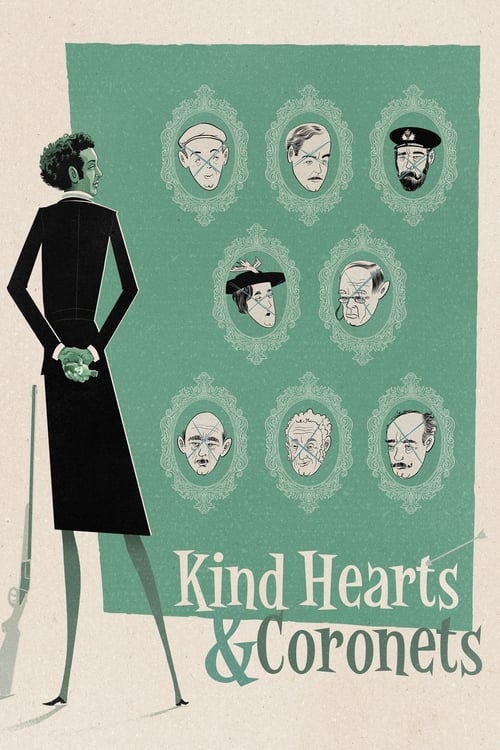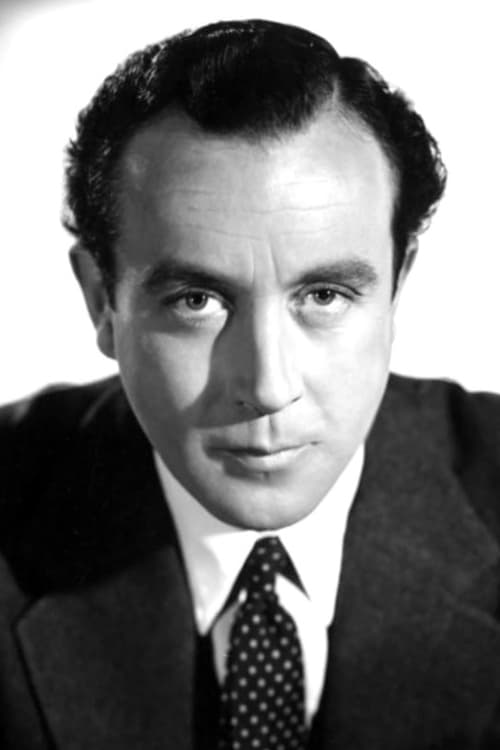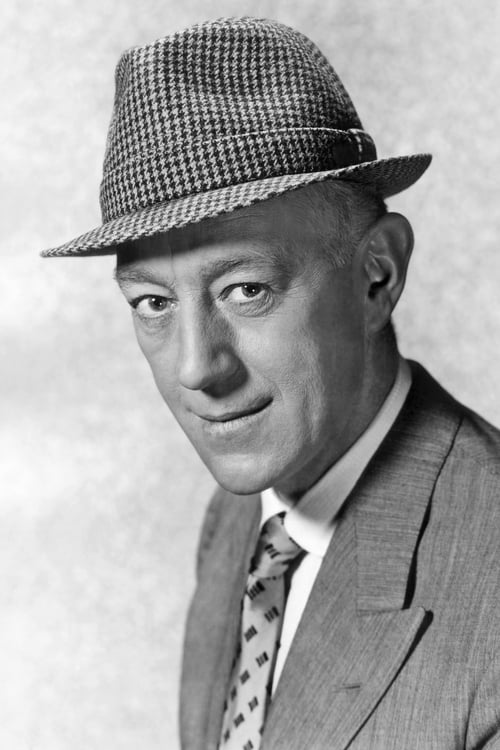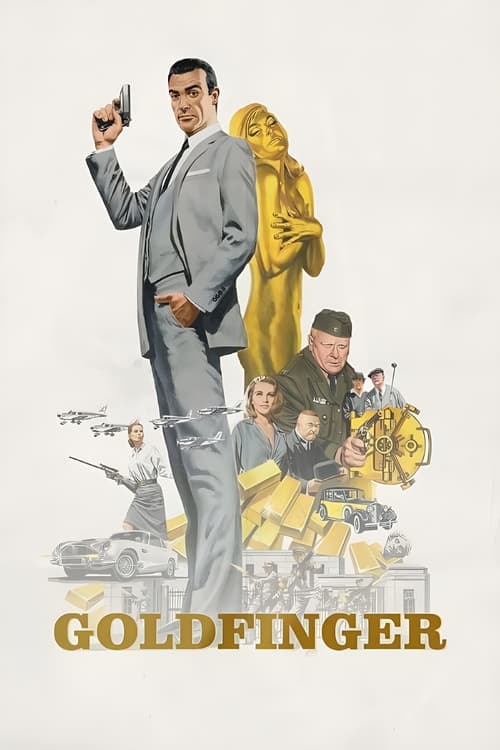
Kind Hearts and Coronets
When his mother eloped with an Italian opera singer, Louis Mazzini was cut off from her aristocratic family. After the family refuses to let her be buried in the family mausoleum, Louis avenges his mother's death by attempting to murder every family member who stands between himself and the family fortune. But when he finds himself torn between his longtime love and the widow of one of his victims, his plans go awry.
Dialogues from Movie Kind Hearts and Coronets
Quotes from Movie Kind Hearts and Coronets
Memorable Scenes from Movie Kind Hearts and Coronets
The Opening Monologue
The film opens with Louis Mazzini, the protagonist, narrating his life story from a prison cell. This sets the tone for the entire film, as he explains how he has been wronged by his aristocratic family, who disowned his mother and him. The moment is both darkly humorous and deeply introspective, as Louis reveals his motivation for revenge against the D'Ascoyne family.
Context: Louis's introduction frames his character as a sympathetic anti-hero, creating a connection with the audience. His calm recollection of events hints at the dark path he is about to take.
Murder and Misadventures
As Louis begins his quest for revenge, each murder of a D'Ascoyne family member is cleverly executed with a mix of comedy and tragedy. The pivotal moment comes with each successful murder that showcases Louis's transformation from a mild-mannered man to a calculated killer. The striking visuals and dark humor keep the audience engaged and uncertain about their feelings towards him.
Context: The murders highlight the lengths Louis is willing to go for revenge and emphasize both the absurdity and seriousness of his mission, showing the dichotomy of his character.
The Final Confrontation
In the climax, Louis successfully eliminates the last of his rivals, finding himself at a party where he mingles with the remaining D'Ascoynes. Tension peaks when he comes face-to-face with one of his last obstacles. The moment is filled with suspense, sharp dialogue, and visual tension that mirrors Louis's internal conflict.
Context: This scene represents the culmination of Louis's long journey. The audience is left to grapple with the consequences of his actions and the moral ambiguity of his choices.
Revelation of the Truth
After securing his position, Louis confronts his true feelings about his actions. His reflection brings a moment of depth as he realizes the loneliness of his victory. The visuals here focus tightly on his face, capturing the weight of his decisions. This moment marks a significant shift, leading to a realization that the revenge he desired did not bring happiness.
Context: This scene unravels the complexity of revenge and success, challenging the audience's perception of fulfillment.
The Downfall
In a twist of fate, just as Louis thinks he has achieved everything he wanted, he is arrested for his crimes. The shock of this moment contrasts his earlier confidence. The dialogue, rich in irony, emphasizes the unpredictability of life and consequence. Visually, the scene portrays a stark change in Louis's circumstances.
Context: This moment serves as a twist in the narrative, reflecting the film's theme of fate and the unexpected outcomes of one's choices.
The D'Ascoyne Family's Legacy
Throughout the film, we see the D'Ascoyne family members as caricatures, each with their quirks. However, in this scene, as Louis recalls their personalities during his murders, we start to see them not just as obstacles but as flawed individuals with their own dreams. This realization adds layers to the film's narrative.
Context: This moment elevates the story from a mere revenge tale to a commentary on human nature and ambition.
Formal Dinner Scene
In a beautifully staged scene, Louis attends a dinner with the D'Ascoynes, where he must hide his true intentions. The tension rises as he expertly navigates conversation while plotting against them. The cinematography captures the opulence of the setting and the contrasts within the characters.
Context: This moment showcases Louis's cunning and the societal norms of class and privilege that are central to the film's conflict.
Louis's Conflicted Emotions
Post-murder, Louis reflects on his actions in solitude. The weight of his decisions starts to settle in, and the visuals become darker, contrasting the earlier playfulness of his character. This introspective moment reveals the impact of his choices on his psyche.
Context: This marks the beginning of Louis's conflict between ambition and morality, deepening audience engagement with his character.
The Accidental Hero
After a series of mishaps, Louis finds himself unintentionally saving another character. The irony and humor in this scene highlight the absurdity of fate. It resonates with the audience, keeping them on their toes regarding his character's growth.
Context: This moment juxtaposes the darker elements of the film with light-heartedness, showcasing its unique tone.
The Letters
Louis receives a letter that ultimately seals his fate. The tension builds as he reads between the lines, understanding the implications of the D'Ascoyne's deceit. The close-up shots on the letter enhance the emotional weight of this moment.
Context: This revelation reinforces the theme of betrayal and loss, pushing Louis further down his dark path.
The Ill-Fated Love Affair
Louis’s romance with a D'Ascoyne is filled with passion yet doomed from the start. The final moment of their relationship brings heartache as he chooses revenge over love. The rich visual contrasts make this a bittersweet scene.
Context: The emotional stakes of love lost intertwine with the revenge plot, further complicating Louis's motivations.
The Execution Scene
The film’s climax hits hard when we see the prison cell where Louis reflects on his impending execution. The moody lighting and subdued colors amplify the sense of despair as he confronts his fate. This haunting scene echoes the film's themes of consequence and despair.
Context: This moment encapsulates the tragic realization of having achieved his goal yet lost everything important.
The Confession
In a dramatic turn, Louis is confronted by a family member about his deeds. The dialogue is intense, laden with subtext about morality, ambition, and vengeance. The emotionality of this confession scene makes it a pivotal moment in the narrative.
Context: This exchange reveals Louis’s inner turmoil and helps clarify his complex character motivations.
The Return to Innocence
Towards the film's conclusion, Louis reflects on what he lost through his ambition. As he gazes into a mirror, there's a visual metaphor of self-realization. The close-up shot reveals his internal conflict and regret.
Context: This scene is vital as it ties back to the film's theme of the cost of ambition and revenge.
The Final Twist
In the last moments, as the film ends, there's a revelation that leaves the audience gasping. The unexpected nature of this twist elevates the story, leaving viewers contemplating the intricacies of the plot.
Context: The twist serves as a powerful reminder of the unpredictability of life and the moral lessons embedded in Louis's journey.
The Closing Scene
The film concludes with Louis in his cell, reflecting on his actions and their consequences. The final shot reveals a haunting emptiness in his eyes, leaving viewers with a lingering sense of loss. The cinematography captures the somber mood effectively.
Context: This ending encapsulates the tragic tale of ambition gone awry, reminding the audience of the broader implications of Louis's journey.
Download App
Behind the Scenes from Movie Kind Hearts and Coronets
Eddie Izzard's Inspiration for Dual Characters
The role of the D'Ascoyne family was initially meant to feature male actors; however, Alec Guinness, known for his versatility, was cast to play all eight D'Ascoyne characters.
Why it matters: Guinness's performance is a centerpiece of the film, showcasing his range and bringing dark humor to the story; his duality allows for a more engaging exploration of class dynamics.
Title Changes
The film was originally based on the novel 'Roy Horniman's Israel Rank,' but the title was changed to avoid confusion with the popular 'Kind Hearts and Coronets' idiom.
Why it matters: This title change helped solidify the film's distinctiveness and align it with its themes of class and social satire, enhancing its memorable reputation in British cinema.
Filming Locations
Much of the film was shot in and around the London area, with some key scenes taking place at the famous Mountfield Place, which provided a grand backdrop.
Why it matters: These locations not only added authenticity to the upper-class setting but also served to accentuate the socio-economic contrasts within the film's narrative.
Guinness's Character Development
Alec Guinness spent significant time developing his various D'Ascoyne personalities, even taking inspiration from real-life figures.
Why it matters: His depth of character work brought complexity and richness to the roles, which heightened the film’s comedic and tragic elements, leaving a lasting impression on the audience.
Costume Design
The elaborate costumes worn by Guinness required detailed attention and were pivotal in differentiating each D'Ascoyne character.
Why it matters: These costumes played a vital role in establishing character identity quickly, aiding the visual storytelling and enhancing the humor of the various absurdities involved.
Theaters Used for Premiere
The premiere took place in West End London, with the movie being an instant critical success, outpacing many traditional films of the time.
Why it matters: The film's success at premiere set the tone for its legacy, which was largely fueled by word of mouth, establishing it as a classic in the British film canon.
Dark Humor and British Sensibility
The film is known for its dry wit and dark humor, a reflection of the post-war British sensibilities.
Why it matters: This unique comedic style contributed to its enduring appeal and allowed audiences to connect with the characters on a satirical level, reshaping the norms of comedy in cinema.
Last-Minute Casting
The casting of Alec Guinness was somewhat last-minute as earlier actors were scrutinized for their ability to portray multiple roles effectively.
Why it matters: Guinness's late entry brought an unforeseen talent that elevated the film's narrative and consistently kept the audience entertained throughout its progression.
Censorship Issues
Despite its themes, the film faced minimal censorship, allowing its unflinching critique of the English aristocracy to shine.
Why it matters: The film's ability to critique class without heavy cuts has furthered discussions around British class structures, making it an important part of social commentary in cinema.
Music Choices
The score was composed by the illustrious British composer, Benjamin Frankel, who brought a dramatic flair that augmented the film's darker themes.
Why it matters: Frankel's score enhances the emotional weight of certain scenes, subtly guiding the audience through the narrative's complexities and enriching their viewing experience.
Directorial Choices
Director Robert Hamer focused on visual storytelling, utilizing striking compositions and shadows to highlight themes of deception and morality.
Why it matters: These choices not only elevate the visual engagement of the film but also reinforce the narrative's tension, urging the audience to question the motives behind each character.
Improvised Moments
Several lines in the film were improvised by Guinness, showcasing his ability to adapt to the on-set environment and enhance the comedic narrative.
Why it matters: These improvisations contributed to a more natural and organic tone, making the humor feel fresh and spontaneous, thus maintaining viewer interest.
Cutting Room Decisions
Some scenes featuring additional D'Ascoyne relatives were cut from the final edit to streamline the storyline.
Why it matters: This decision ultimately sharpened the focus on the central narrative, allowing for a tighter, more coherent story that navigates through various themes without distractions.
Cinematic Technique
Hamer applied innovative camera techniques, such as extreme close-ups and quick cuts, to enhance the sense of drama and elevate comedic timing.
Why it matters: These techniques brought a modern sensibility to the film, influencing future British comedies and demonstrating the impact of visual storytelling in character-driven narratives.
Cameo Appearances
Various members of the cast appeared in multiple roles, contributing to the film's thematic element of duplicity.
Why it matters: This layered casting approach adds a meta-narrative that invites viewers to explore the blurred lines between identity and morality within the story.
Dramatic Irony
The film employs dramatic irony extensively, particularly with the audience's knowledge of the protagonist's morally gray actions.
Why it matters: This technique enhances the tension and creates a dynamic relationship between the audience and characters, allowing viewers to experience both sympathy and horror.
Cultural Impact
Upon its release, 'Kind Hearts and Coronets' was hailed as a revolutionary piece of cinema that bridged comedy and tragedy, influencing future filmmakers.
Why it matters: This cultural impact established 'Kind Hearts and Coronets' as a timeless work, paving the way for future films that employ dark humor and satirical critiques of societal norms.
Editing Choices
The film's pacing was critically shaped in the editing room, with early cuts deemed too lethargic, requiring substantial revisions for comedic timing.
Why it matters: The final edit's snappy pacing solidified the film's reputation and allowed comedic moments to land more effectively, ensuring audiences remained engaged throughout the film.
Download App







